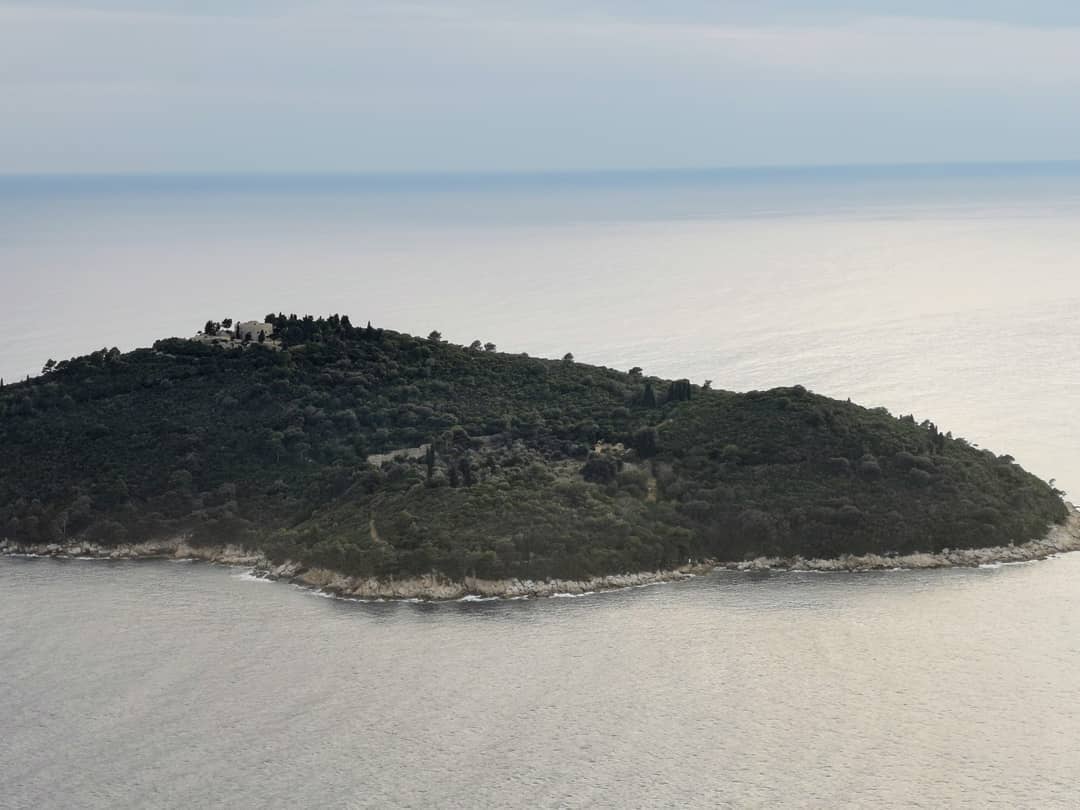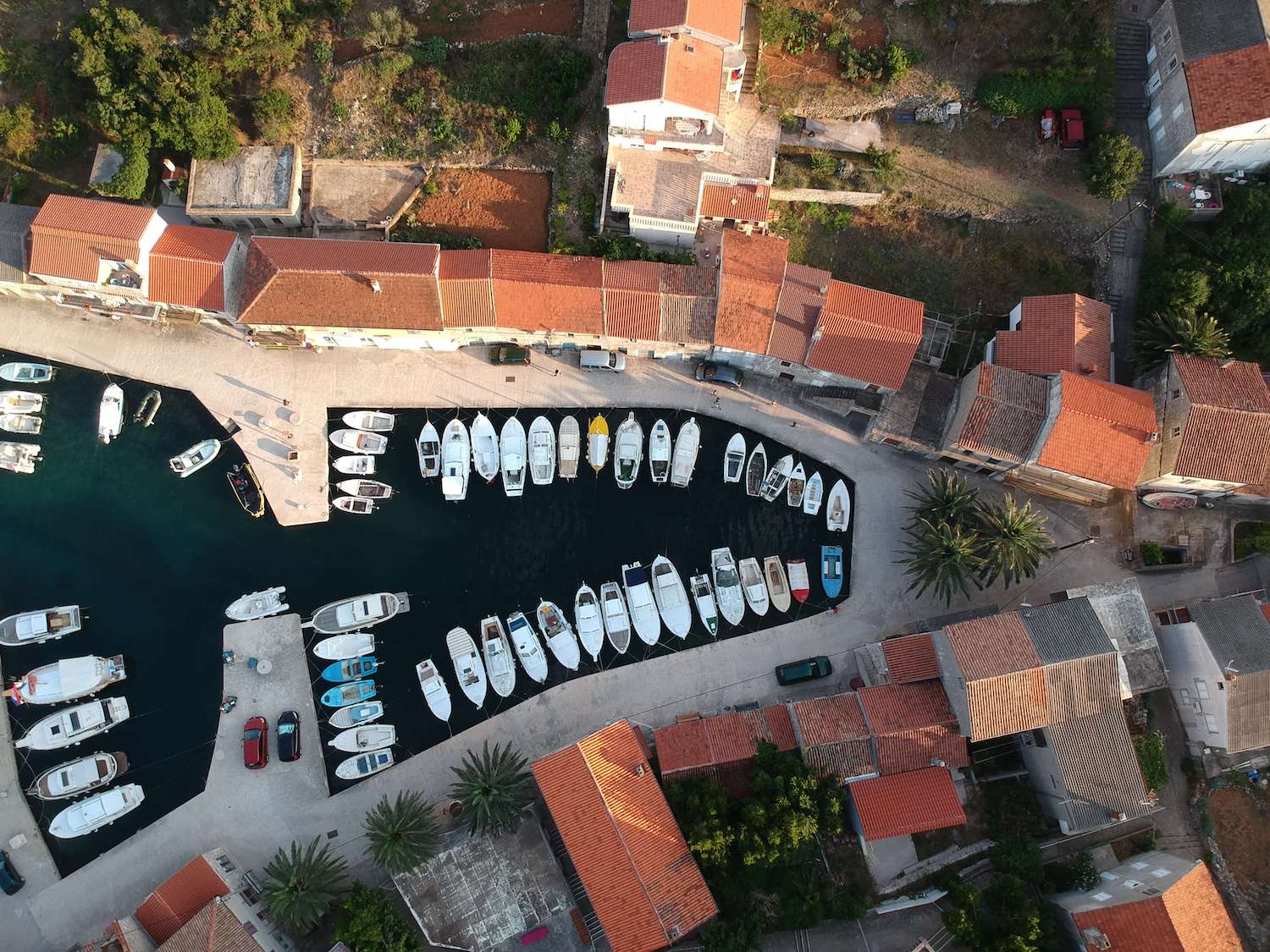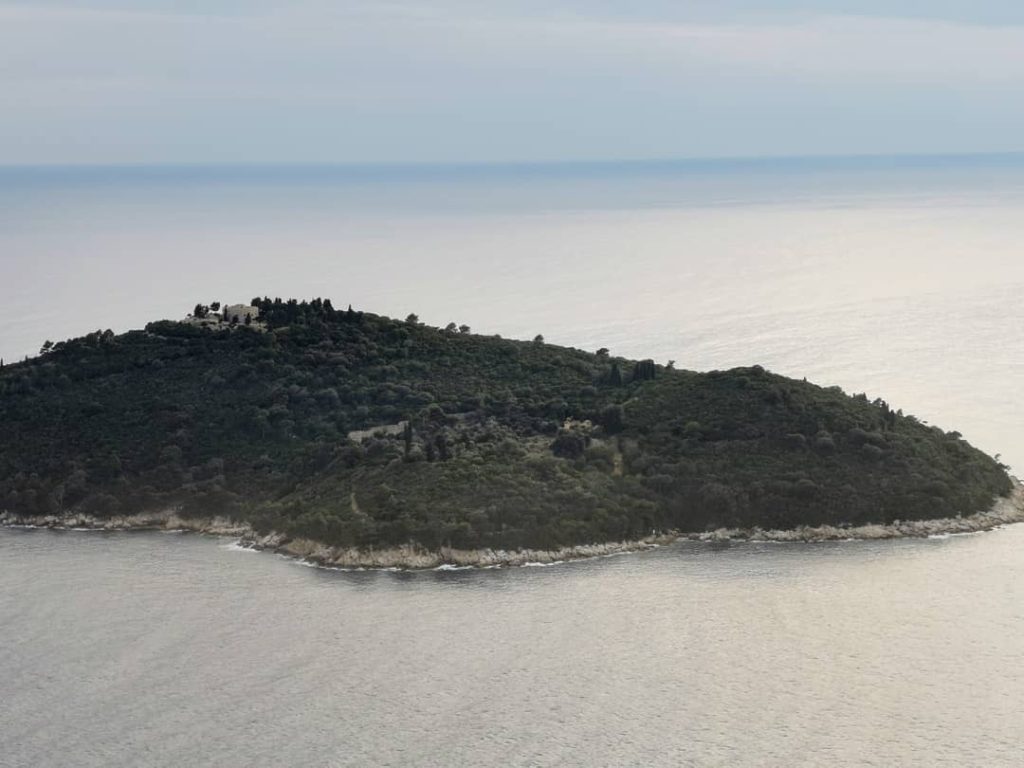April 6, 2020 — The Bura swung then pummeled the island of Iž along its flank. “Bura de levantara,” as the elderly call it. The air was briny. The seagulls hung suspended in the sky, beaks piercing the wind.
The coronavirus yesterday claimed the life of a middle-aged, otherwise healthy man — the first such victim in Croatia. Yet on this island and many other bucolic, empty hideaways, you’d never know there was a pandemic.
The nation’s islands have been spared the brunt of the COVID-19 pandemic. Infections remain low, with Murter being the lone exception.
Locals admit their feeling of safety comes with a dose of guilt… and fear that every island’s inoculation against this global pandemic is mere luck. Luck which may run out.
“Ne izazivaj vraga,” they say. Don’t tempt the devil. Indeed.
Women of a certain age still say, “Kuga te ubola.”
It loosely translates to “May the plague get you.” Depending on the context, it’s either a curse against an enemy or expression of delighted shock at inappropriate humor.
It’s still in use for a reason. Because Iž and other islands like it suffered terrible losses during previous pandemics. The Bubonic plague, cholera and Spanish Flu swept through these coastal hideaways like a tsunami.
COVID-19 is the outlier — for now.
Familiar with plagues
Virtually every deadly pathogen that hit Europe also swept across Croatia’s islands. Anecdotes, church records and census numbers show odd demographic oscillations so precise, they can’t be the usual harbingers of death — war and famine. Process of elimination leaves only disease.
The Bubonic plague hit Zadar 20 times between the sixth and 17th centuries, according to late historian and Iž native Dr. Roman Jelić. The plague became so common, locals built churches, chapels and altars devoted to Saint Rocco, who protected against the illness (Mali Iž’s altar among them).

The island of Lokrum served as a lazaret for Dubrovnik during the Black Death. The innovation quickly spread.
As the plague hit over and over, Zadar’s islands coopted an efficient system of stopping the spread of the illness, one recognizable today and oft-attributed to Dubrovnik. Good ideas, like plagues, often spread quickly.
Confirmed infections on islands went to lazarettos, or infirmaries, built in the hinterlands or the uninhabited islets. This early form of the quarantine and forced self-isolation set the foundations for the current fight against COVID-19.
Still, the numbers were staggering.
The island of Ugljan at the end of 17th century lost nearly 10 percent of its population in a single year. Records suggest the plague swept through the island, end-to-end, with the neighboring islands Galevac and Ošljak serving as lazarettos for the ill.
A century later, Molat lost 141 residents — more than a quarter of its population — in the four years between 1772 and 1776.
Medieval medicine at the time included some isolation measures, but hygiene and knowledge of microscopic killers were non-existent. The islanders of lore were helpless to stop the viruses. A full-time medical professional on a Dalmatian island is a modern invention, arriving about the same time as electricity.
Other deadly pathogens followed the plague: diphtheria, smallpox, scarlet fever, typhus, dysentery, and the Spanish Influenza. The lazarettos built for Black Death sufferers remained, repurposed for every new disease.
No one to infect
The modern coronavirus pandemic in Croatia began around in the beginning of March. Not that anyone on the islands noticed a difference.
The newer houses built by foreigners sat dormant — as usual. The other homes grow quiet, one by one, every time the death bell tolls.
The coronavirus’s great gift to Dalmatian islanders was its timing. It arrived during the annual stretch of ghoulish emptiness that leaves one wondering if anyone lives here at all. Had it hit two months earlier or later — New Years or the summer — and the situation would look bleaker.
The few who live here all year emerge from their homes every morning. Some split olive wood to prepare stoves for the single match that’ll heat their house at sunset. Others wait in line for a loaf of bread.
All have routines to survive early March: the temperature fluctuations and bitter wind sweeping down from the Velebit Mountain make it a torturous time. That signature March Bura. The “healthy” wind which pseudo-scientists around here claim is a panacea for many ailments.
It clears humidity out of the air, they say. Dries the sinuses, leaves a crust of salt on doors and windows. It cuts through the thickest of jackets.
Winter life will keep us safe, they say. Here, the winter sun is medicinal. (From April onwards, it’s a menace.)
Social isolation doesn’t need a mandate here either. At this time of year, it’s the norm.
If COVID-19 found its way to islands like Iž, it’d lack hosts. The regulars on the island keep a safe distance from each other — blame water-saving over hygiene, emotional suppression, and the disinterest that comes with seeing the same faces at the same time every day. Attempts at physical contact betray a too many drinks… or fair-weather friend trying to make good with the locals. We know better.
When a biting wind sweeps across your face and sends a chill to the base of your skull, a hug or a handshake feels ridiculous. Head nods and grunts are enough.
No well-wishers, family members, weekend visitors, or preparations for summer flings. Save a weekend bacchanal for carnevale, or perhaps a funeral, you’d be hard-pressed to find anyone visiting Iž or any of the other smaller islands before Easter.
Still Following Protocols
Make no mistake: people here follow the rules with aplomb. The store only allows one patron at a time, each greeted with a squirt of hand sanitizer at the door. The others wait outside in a haphazard line, with each new arrival pointing a questioning finger to see who’s ahead of them.
This rationing and pseudo-caution that comes with assuming everyone is a vector for a virus is familiar. The history of population-wide illness left a mark on many island norms.
In a long enough conversation, someone will mention a distant ancestor known to have died of… something. Those tales still circulate, along with the centuries-old quack medicine for combatting the illnesses.
Locals also used to fumigate their houses with burning juniper bushes to oust the plague. While nobody smokes themselves out of their own home, islanders still have an immeasurable fear of drafts — a well-documented phenomenon that dates back to the era when tuberculosis, common colds and pneumonia were death sentences.
It’s still customary for a visitor to shout your name a few steps before they arrive at your door — a bit of common courtesy predating doorbells but also a chance to be sent away without getting too close.
Folk medicine remedies are still common. Every bodul (islander) shoveling spoonfuls of honey into their gullet to combat a cough can thank their ancestors, who did the same to survive tuberculosis and pneumonia. Ditto to inhaling the vapors from sage or chamomile tea, a centuries-old remedy for pulmonary illnesses.
Some islanders even continue to pile on layers of clothing and blankets to treat a fever, believing it helps the body cook out the pathogen. These treatments are still being suggested to young islanders with the fervency of Gospel.
Perhaps the closest the islands saw to today’s pandemic was the cholera outbreak of 1855, which hit every settlement on every island in the Zadar archipelago. The incomplete records from the time show 7,770 people were infected, 2,690 of them died. A 34 percent mortality rate. (It should be noted Patient Zero arrived from Italy.)

The author’s home: devoid of people whether there’s a pandemic or not.
Offering An Escape
During past the pandemics, those fearing death often fled to the Dalmatian islands. It may happen again.
Already detached from societal epicenters, the potential for an island becoming a pandemic hotbed disappeared over the last century, as islanders emigrated to the generous shores of Canada, Australia and the United States. Even Murter, now a hotbed, had its COVID-19 allegedly imported by tourists who wanted to get an early start on “The Season.”
That’s not to say the islands like Iž and others are immune to nasty pathogens and the ornery nature of life on this planet. But maybe the four-mile gap between these shores and the mainland is just enough to keep the inhabitants safe.
That sense of detachment and self-sufficiency fuels the people living here year round. But the longer this pandemic lasts, the supposed-faults of island life will slowly become appealing to The Crowd. Those who often shun a quiet existence to be at the vibrating center of modern civilized life. Their norms are now poisoned.
Isolation, solitude, peace, and detachment from the throngs, shopping centers, cultural institutions and a quiet social life… are now luxuries. And potential life-savers.
A parade of fresh faces uprooting their homes to these islands is inevitable. They’ve already made calls, promising to be here soon. They’ll join a long and storied tradition: escaping to the Dalmatian islands for refuge.
It’s something those of us with roots here all share: there is no native bodul. Everyone came here to escape from something: fights between Venetians and Ottoman Turks, famine… plagues.
This pandemic will end. The sun will continue to rise just behind the neighboring island of Ugljan and settle in the west behind the church steeple at the top of the hill. Like it always does.
Those still alive when this is all over will tell their kids and grandkids what it was like to watch fraction of the world suffer even though the illness touched nearly everyone.
And those who passed the time on Croatia’s bucolic little islands will hopefully shrug and say, “Nothing really changed for us. A few more people showed up and, when it was over, they all left.”
Don’t tempt the devil.









